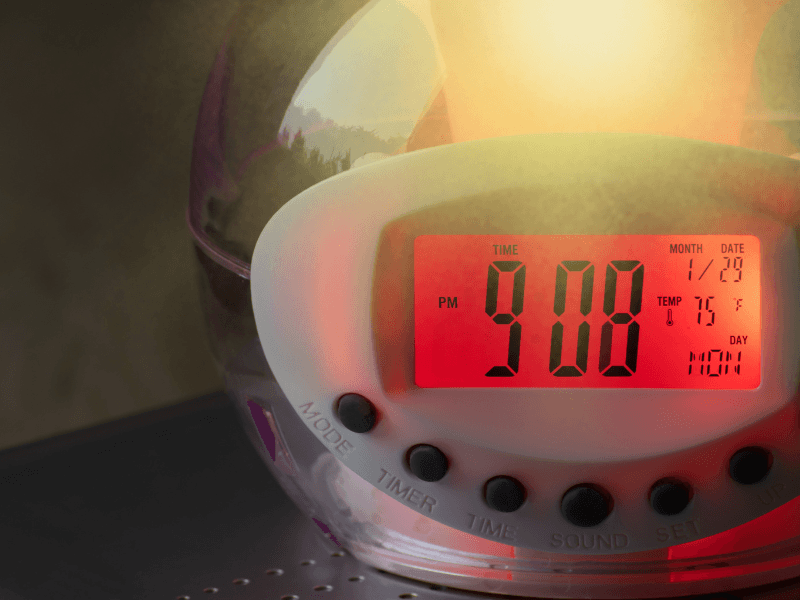Have you ever thought about the consequences of mattress production on the environment? The traditional mattress industry is responsible for millions of tons of chemical emissions and other pollutants that have a negative long-term impact on our planet. But, we don’t often think about it, or what efforts are being taken to reduce this type of damage. In this blog post, we’ll attempt to unravel some of the mysteries behind mattress production, revealing what goes into making a mattress and the potential cost to our environment. You may come away from this post with a better understanding of the mattress industry, what risks it poses and what measures can be taken to reduce its environmental impact. So, if you’ve ever wondered what lies beneath your mattress…let’s uncover the truth together.
Quick Explanation
The production of mattresses can have an adverse effect on the environment, from their materials and chemical components to their packaging and shipping methods. Sustainable mattress manufacturing practices are essential for reducing their negative impacts on our planet's resources.
The Environmental Impact of Mattress Production
The environmental impact of mattress production is undeniable. From the resources used to create them, to their eventual disposal, mattresses can have a considerable environmental footprint. It’s important to consider both the positive and the negative impacts when it comes to how mattresses affect our environment.
On the one hand, mattresses are made with a variety of different material resources including metal coils, foam, natural fibers such as cotton or wool, and synthetic fabrics. This has very real implications for the environment, both in terms of the depletion of natural resources and the strain that manufacturing processes put on fragile ecosystems. The sustainability of mattress production remains an ongoing concern in many parts of the industry.
On the other hand, certain materials used in mattress construction actually have quite positive effects for the environment. For example, some mattress manufacturers have begun using recycled cotton in their products, which helps divert waste from landfills and reduces carbon emissions associated with agricultural production. Additionally, biodegradable components such as natural latex are growing increasingly popular among eco-conscious consumers and producers alike.
At the same time, we must remember that mattresses also come with an eventual end-of-life impact—namely, disposal and recycling challenges. With this thought in mind, it is clear that more needs to be done to limit mattress waste and ensure proper disposal practices in order to reduce the overall environmental impact of the industry.
It is essential to keep exploring greener alternatives that effectively reduce the environmental impact of producing mattresses while still meeting consumer demands. In order to continue having meaningful conversations about this vital issue, it is critical to investigate further into all aspects involved with factory environments—including chemical use and waste management strategies—in order to make informed decisions moving forward.
Chemical and Waste Management in Factory Environment
The environmental impact of mattress production extends to practices in factory environments as well. Chemical compounds used in factories have the potential to be extremely damaging to both human health and the environment. In some cases, factories can contribute to air pollution and water system contamination if proper waste disposal and management is not implemented. The use of dangerous chemicals for certain processes, such as foam production, should also be closely monitored as these compounds can be released into the atmosphere during product development.
On the other hand, sophisticated engineering practices can be used to ensure that hazardous materials are contained during production and disposed of correctly afterwards in order to minimize environmental harm. Factories must take steps to ensure that biodegradable and non-toxic materials are utilized whenever possible throughout the manufacturing process. Special methods and systems should also be in place for capturing fumes and containing gasses and liquids which may become hazardous during production. Finally, a comprehensive waste management plan should exist in all factories in order to properly dispose of any unused chemicals or materials.
Regardless of whether a factory is equipped with effective engineering protocols or not, it is essential that they take steps to reduce their environmental footprint by strictly managing their use of hazardous materials. Solid waste management techniques should also be considered critical for any company that manufactures consumer goods such as mattresses due to their potential ecological effect. Moving forward, mattress producers should strive for more sustainable initiatives within the factory environment in order for progress toward more environmentally friendly products to occur with minimal disruption to the ecosystem.
With reducing the environmental impact at factories being an important step to green mattress manufacturing, many companies are now focusing on turning towards recycled materials for production instead of producing entirely from new components. To discover more about this promising trend, we now turn our attention toward understanding how recycled material utilization can revolutionize mattress making and shape a more sustainable future for these ubiquitous products.
Crucial Highlights
The environmental impact of mattress production extends beyond factory environment practices, which can contribute to air and water pollution if not properly managed.To reduce the environmental footprint, factories must use biodegradable and non-toxic materials, and have effective waste management systems in place for capturing dangerous fumes and disposing of chemicals. Many companies are now turning to recycled materials instead of new components for mattress production; this has the potential to revolutionize mattress making while creating a more sustainable future.
Recycled Materials in Mattress Manufacturing
When it comes to mattress manufacturing, the use of recycled materials is a major topic of discussion due to its obvious environmental benefits. As expected, there are two sides to this debate – proponents of recycled materials and opponents who cite potential health or environmental hazards that may be associated with them. Advocates of using recycled materials argue that it helps to reduce the amount of waste material generated from a factory setting while also upholding environmental standards. They suggest that mattress manufacturers should look into utilizing post-consumer recycled components whenever possible in order to limit their effects on sustainability and the planet's resources.
Opponents voice concerns about the components used for recycling mattresses. They say these components have a wide-reaching impact both in terms of health and the environment. This includes possible exposure to toxic substances released during production as well as air and soil contamination from volatile organic compounds used in their production. For example, an investigation has found that some recycling centers that accept unwanted mattresses have higher levels of brominated flame retardants than those not accepting mattresses, even though flame retardant chemicals have been phased out over time.
While there is evidence for both arguments, ultimately what matters is whether or not recycled materials can be used safely when crafting mattresses without potentially jeopardizing human health or the environment. Mattress manufacturers should consider investing in safe upcycling techniques and make sure to properly dispose of any chemical waste byproducts appropriately before considering the use of recycled components.
Moving forward, mattress manufacturers must also decide what types of foam materials they will integrate into their products – natural or synthetic foams? After carefully evaluating each option, manufacturers must make well-informed decisions regarding which materials they choose to uphold environmental accountability while maximizing product performance and satisfaction.
Natural or Synthetic Foam Materials Used
The debate about the use of natural or synthetic foam materials in mattress production is a key factor when discussing the environmental impact of the industry. On one hand, synthetic foams such as polyurethane foams (PUF) are often derived from non-renewable resources, can emit toxic chemicals and are not biodegradable. However, they are less costly, more durable and mold-resistant when compared to natural materials. On the other hand natural foams such as cotton, wool and latex are renewable and biodegradable but tend to be more expensive due to higher production costs. They also may contain molds like mildews which can cause health issues with prolonged exposure.
Studies conducted by the University of Michigan show that PUF foams were the most popular mattress material in terms of usage and environmental impact. They concluded that the impacts generated from PUF foams during their production cycle was on average 8 times higher when compared to natural foam materials. Despite this, research also indicates that there is still much room for improvement when it comes to creating a truly sustainable mattress given that currently about 95% of mattress materials could potentially be recycled instead of sent to landfills.
It is clear that the mattress manufacturing industry must address this debate head on through a whole-systems approach that considers both cost and environmental factors in order for a greater shift towards sustainability. This will involve evaluating all stages of their process from procurement and production all the way to disposal and possibly remanufacturing processes. As our knowledge base expands so too should our ability to develop holistic long term sustainable solutions for this ever growing industry. Moving forward in this journey, life cycle analysis becomes an important tool to assess how each stage affects the overall sustainability of any product or design choice we make - something we can explore further in our next section.
Life Cycle Analysis of Mattress Manufacturing Processes
The life cycle analysis of mattress manufacturing processes is an important component to evaluating the environmental impact of these processes. Natural or synthetic foam materials are often used in mattress production and can have a notable difference in the environmental impact based on their origin and disposal methods. Life cycle analysis is employed to map out the entire process from start to finish.
Natural foam materials such as latex, wool, and cotton are generally considered more sustainable due to their natural origins but their production poses greater energy demands and often come with water and land use impacts. On the other hand, synthetic foam materials such as PU or HDF are highly synthesized, requiring high-energy demands for production, but they are less likely to be consumed by pests which make reuse and recycling potentials healthier.
When considering the life cycle analysis of mattress manufacturing processes, it is important to understand that both natural and synthetic foam materials offer unique trade offs while also having positive characteristics. It is important that consumers remain informed so they are able to make more environmentally conscious decisions understanding the impacts of their choices.
Now that we have established a better understanding of the life cycle associated with mattress manufacturing processes, we can begin to explore more deeply the carbon dioxide emissions associated with them. Even though foam sources may differ in origin and demand different levels of energy usage, one thing remains certain—carbon dioxide emissions are inevitable.
- According to a scientific report released in 2018, approximately 60 million metric tons of mattresses are discarded worldwide each year.
- A 2020 study concluded that over 90% of mattress components are not recyclable, resulting in an increase in landfilled mattresses and associated emissions.
- An additional 2020 research found that mattress production processes can often be energy intensive due to the use of polyurethane foam and other petroleum-based materials which release volatile organic compounds (VOCs) into the air.
Carbon-Dioxide Emissions during Production
In the production process of mattresses, carbon-dioxide (CO2) emissions contribute significantly to the overall environmental impact of mattress manufacturing. The Life Cycle Analysis conducted on various production processes of mattresses sought to uncover the extent to which these processes contribute to CO2 emissions. In order for mattress manufacturers to minimize the CO2 footprints associated with production and still adhere to industry standards for quality and safety, many companies have implemented sustainability programs or outlined green initiatives as part of their operations.
The debate surrounding CO2 emissions from mattress production is one that has split opinion along corporate and environmentalist lines. On one hand, company stakeholders may advocate for minimal changes in their production methods as already required by governing bodies, while environmental activists would suggest more stringent regulations and sustainable practices be adopted and enforced. According to experts within this field, there are indeed steps that can be taken by businesses to reduce their CO2 footprint during manufacturing, many of which do not even require large investments or additional resources.
One example of this involves introducing eco-friendly bedding materials that are produced via low-emission processes like steam treatment instead of chemical alteration. Additionally, some companies have also switched to renewable energy sources like wind or solar power to supplement their energy needs in place of traditional forms of energy generation like coal burning plants or oil refineries. These shifts in operations can result in significant declines in the amount of CO2 emitted by companies producing mattresses.
As evidenced by the wide range of initiatives being implemented by forward-thinking companies, reducing the CO2 footprint can be achieved without compromising product quality or industry standards for maintaining safe and healthy working conditions. Moving forward, it will be important for mattress producers to both watch out for new developments in terms of sustainable manufacturing strategies, as well as address any existing areas from within their operations that may need improvement with regards to reducing CO2 emissions. This effort is crucial if organizations hope to mitigate their environmental footprint at a time when preserving soil quality is increasingly vital.
The Impact of Mattress Manufacturing on Soil Quality
The effects of mattress manufacturing on soil quality must also be considered. Conventionally produced mattresses contain materials such as polyurethane foam and polyester, both of which are petroleum-based products that have the potential to leak pollutants into the soil. Moreover, crude oil-based products tend to bind more strongly to soil particles, reducing the rate of degradation and leading to build up of pollutants in the soil.
On one hand, studies show that emissions from mattress manufacturing contribute to poor soil quality by releasing volatile organic compounds which can lead to an impact on the microbial composition of the soil. For example, a recent study in Canada found that prolonged exposure to polyols — a petroleum-based product commonly used in mattress production — had severe consequences on soil health by decreasing bacterial biomass and diversity in the soil.
On the other hand, some industry leaders have argued that if companies take proper safety measures for disposal and manufacturing processes, then there would be no environmental damage due to mattress production. According to this argument, policies can be implemented to minimize emissions from production facilities and landfills during disposal, reducing any contamination from reaching the soil.
It is clear that while both sides make valid points, there is a definite need for governments and businesses alike to put policies in place that will ensure mattress production has minimal impacts on local air, water and ultimately soil quality. In contrast, green alternatives such as natural latex or coconut coir mattresses could help reduce dependence on fossil fuels and therefore limit any unintended consequences of their use. With these viable options available today, it becomes easier to create an environmentally friendly mattress industry while preserving soil and other ecosystems. As we move onto exploring sustainable practices when it comes to mattress production, it is important for businesses to keep these considerations in mind as they seek out methods for creating change with minimal impacts on local ecosystems.
Mattress Production and Green Alternatives
The environmental impact of mattress production has been a hotly-debated issue within the industry for many years. From the material sourcing to disposing of old mattresses, there are numerous ways that traditional mattress manufacturing processes are causing harm to our environment. But green alternatives exist that can reduce or potentially eliminate some of these detrimental effects. Moving away from synthetic materials to natural, renewable resources is one way mattress producers have been able to make a more sustainable product.
On one side of the debate, proponents of traditional mattress production make a case that current technologies and processes used are not significant enough to cause any major environmental damage. Opponents contend that this attitude is leading us down a slippery slope - they point out that continued exposure to toxins like formaldehyde present in modern mattresses could have long-term impacts on human health and the environment.
Proponents of green alternatives argue that manufacturers should have an obligation to reduce their emissions and choose materials responsibly. They advocate for using natural, plant-based ingredients such as wool or cotton instead of petroleum-based foam or plastics. This reduces the amount of energy required for production, decreases CO2 in the atmosphere, and eliminates potentially hazardous materials from entering our water supply.
There is also evidence from several studies indicating that switching from conventional bedding materials to more environmentally friendly options can significantly reduce the amount of volatile organic compounds (VOCs) released during use. VOCs are responsible for many adverse health effects and can contribute to air pollution when not addressed adequately. Therefore, by reducing VOC levels in mattresses as well as using non-toxic dyes and fire retardants, manufacturers can create products with fewer chemicals that can be safely disposed of the at end of life.
Ultimately, green alternatives for mattress production should be explored in greater detail so we can continue moving away from synthetic materials and towards more eco-conscious solutions that do not put our environment at risk. With careful research and further innovation, mattress producers may soon find ways to create comfortable sleep products without imposing adverse environmental consequences – something that helps all involved parties sleep better at night.
Common Questions and Their Answers
How does the disposal of mattresses affect the environment?
The disposal of mattresses can have a major environmental impact. When broken down, mattresses contain various materials that can be potentially dangerous such as foam, wood, metal, and plastic. These materials are often not biodegradable and end up in landfills where they take up space and release harmful toxins into the environment when they break down over time. Additionally, mattresses contain hazardous chemicals like flame retardants, which can enter the soil and water system when not disposed of properly. This contamination can lead to serious air, soil, and water pollution. Furthermore, mattresses are often bulky and difficult to dispose of due to their size and shape; this leads to an increase in carbon emissions as they must be transported to landfill sites. Finally, the misuse of these mattresses may also lead to additional waste generation by encouraging consumers to buy new beds rather than reuse existing products. In conclusion, the disposal of mattresses can have a substantial negative effect on the environment if not handled properly and responsibly.
What are the energy requirements for mattress production and how does this impact the environment?
Mattress manufacturing requires a significant amount of energy to produce, which has a direct impact on the environment. The energy requirements for mattress production depend on the type of production process used. Generally, mattress manufacturing involves a large amount of material-handling, cutting, and assembly processes which can involve chemicals or mechanical processes. Additionally, companies often use fuel-guzzling machinery to power these processes, and other energy intensive procedures such as welding or curing.
All of this energy requirement leads to high emissions of carbon dioxide, nitrogen oxide and sulfur dioxide, which causes air pollution. This air pollution affects both the local environment and global climate change. Furthermore, it may also contribute to water contamination since wastewater from mattress manufacturing can contain hazardous chemicals and dyes that can end up in nearby rivers or lakes.
Beyond this, mattresses are typically made with synthetic materials like polyurethane foam and petroleum-based adhesives which release hydrocarbons when burned and further pollute the atmosphere with dangerous particulate matter.
In sum, mattress production has major environmental implications due to its energy requirements and use of synthetic materials that have negative effects on the environment.
What materials are used to make mattresses and how do these impact the environment?
Many materials are used to make mattresses, including natural fibers like cotton and wool, as well as synthetic materials like vinyl, polyurethane, and foam. Each of these materials have environmental impacts that should be considered before use.
Cotton and wool are all-natural materials sourced from plants and animals. While both of these materials are renewable resources, they require a great deal of water and resources to produce. Cotton production is also associated with air and water pollution due to its reliance on chemicals, making it potentially unsustainable. On the other hand, wool production is much more sustainable since sheep provide a renewable source of raw material that can easily be replaced by shearing new coats each year. However, wool is not without its drawbacks: methane production from grazing animals can contribute to global warming.
Synthetic materials like vinyl, polyurethane, and foam have their own environmental impacts as well. Vinyl is made from petroleum derivatives such as plastics, resins, and solvents that must be manufactured using large amounts of energy and non-renewable resources. In addition, vinyl production produces carcinogenic toxins which can harm both human health and the environment if allowed to pollute the atmosphere or waterways. Polyurethane shares this same risk from lack of proper disposal; when combined with foams containing brominated flame retardants (BFRs), these materials present a potential health hazard in mattresses that break down over time.
Overall, choosing an environmentally friendly mattress is no small task: each of the materials used in mattress production has potential drawbacks when it comes to sustainability.






















